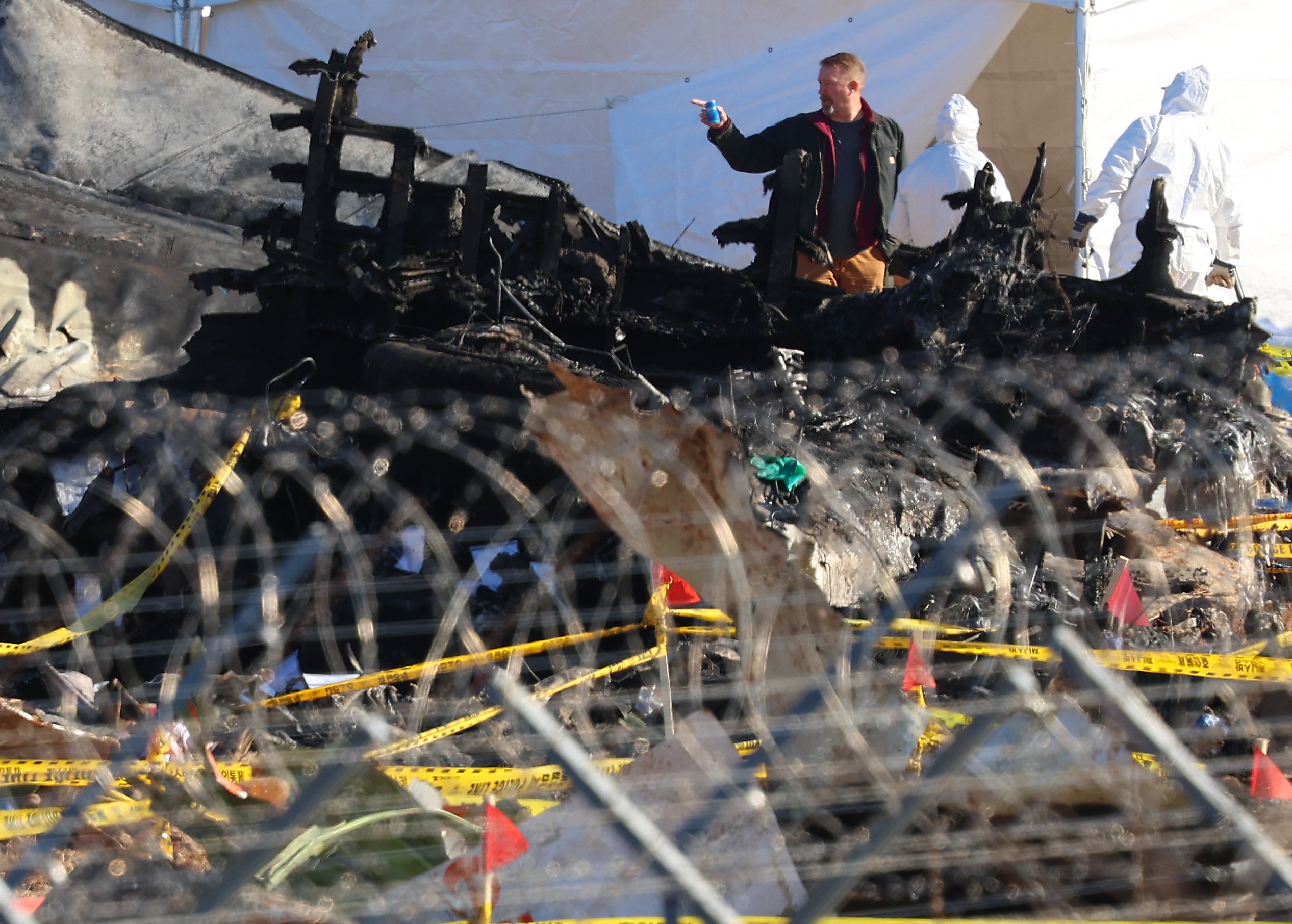South Korea has extended the closure of the airport where a Jeju Air plane crashed last month until 19 January.
A Boeing 737-800 ran off the runway and burst into flames after ramming an embankment at the Muan airport, killing all but two of the 181 people on board.
The embankment housed a “localiser” landing guidance system and South Korea intends to upgrade these structures at its airports this year.
The transport ministry, which has been inspecting safety conditions for airlines and airports since the Muan crash, announced the decision to modify the “localiser” structures on Monday.
“Improvement was deemed necessary including the localiser and its foundations for a total of nine facilities across seven airports, including Muan airport,” the ministry said, adding that it would finalise plans to adapt the localisers by the end of January with the goal of “completing upgrades within this year”.
The ministry said seven airports, including Muan, have embankments or foundations made of concrete or steel that need replacing.
Korean officials have faced questions about design features of the Muan airport, particularly the large concrete embankment near the end of the runway used to support navigation equipment that the plane ran into.

The government has completed its inspection of six domestic airlines operating Boeing 737-800s and identified violations by some operators, including exceeding inspection timeframes before and after flights and failing to comply with procedures for addressing aircraft defects or passenger boarding issues.
The crash prompted the government to order emergency inspections of all Boeing 737-800 aircraft operated by domestic carriers, with the focus on the landing gear, which appeared to have malfunctioned during the Jeju Air tragedy.
Authorities have banned the Jeju Air chief executive from leaving the country. “The investigation team imposed a travel ban on two individuals, including Jeju Air CEO Kim E Bae,” police said.
It was reported over the weekend that the black boxes of the Jeju Air plane stopped recording four minutes before it rammed into the concrete structure at the end of the runway.







